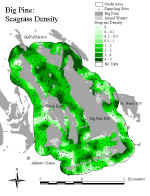
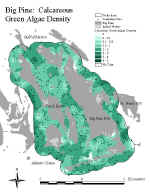
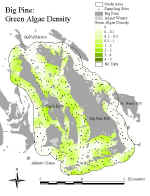
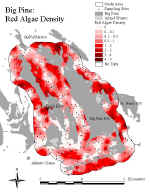
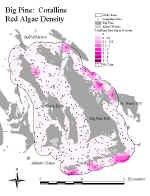
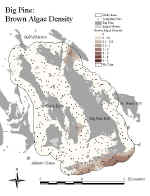
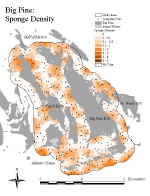
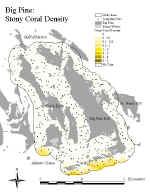
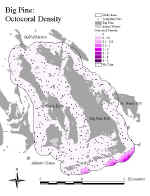
Nearshore benthic community
composition was documented at approximately 1400 sampling locations throughout
the Florida Keys study area
(click on thumbnails for enlarged maps)
Physical data, such as water depth, substrate type, and sediment depth were also recorded at each site. Interpolated surfaces for physical data were also created using a universal kriging algorithm.
(click on thumbnails for enlarged maps)
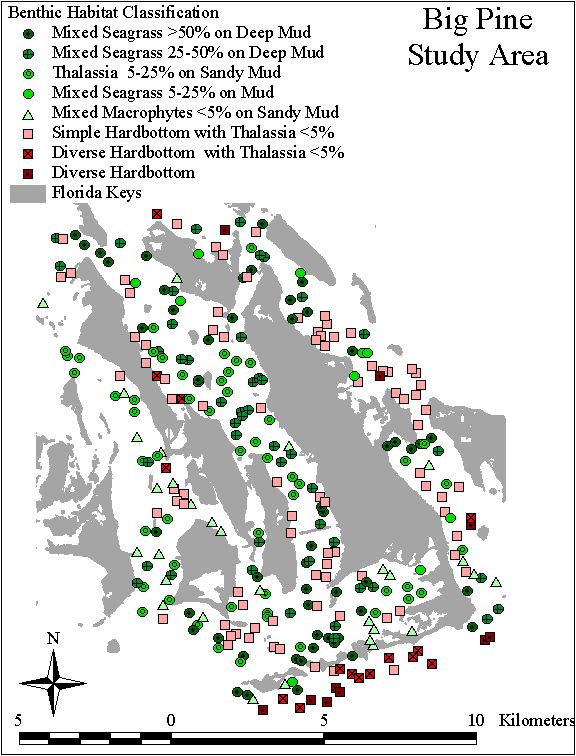
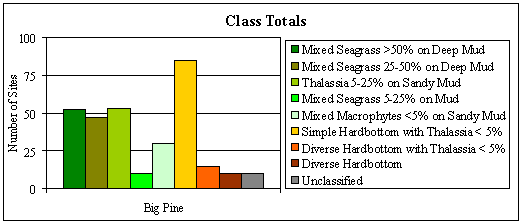
Temporal Variation in Nearshore Benthic Communities: Big Pine Study Area
Nutrient Regimes of Nearshore Benthic Communities: Big Pine Study Area
Relationships Between Project Data and Florida Keys Land Use: Big Pine Study Area
Home Report Study Area Data Locator